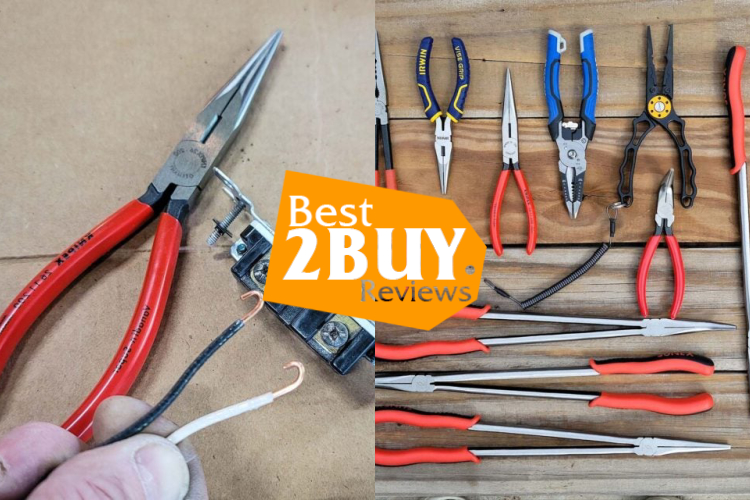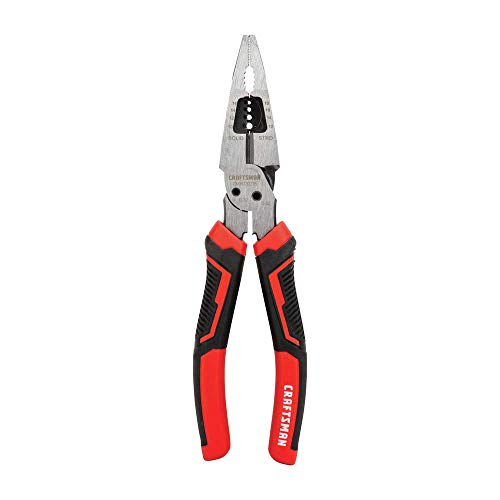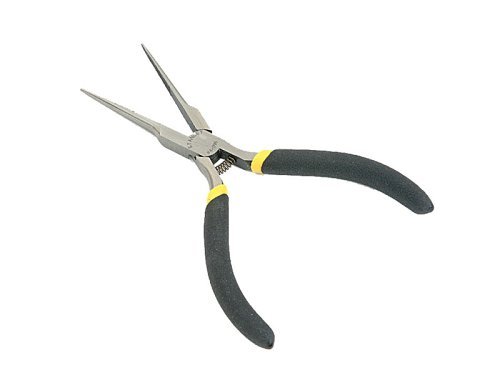How to Choose the Needle-Nose Pliers
A Comprehensive Guide to Needle-Nose Pliers

- 1. A Comprehensive Guide to Needle-Nose Pliers
- 1.1. What Are Needle-Nose Pliers?
- 1.2. Keys Features
- 1.2.1. Long and Slender Jaws
- 1.2.2. Pointed Tips
- 1.2.3. Cutting Edges
- 1.2.4. Serrated Jaws
- 1.2.5. Joint Design
- 1.3. Uses Of Needle-Nose Pliers
- 1.3.1. Electronics Work
- 1.3.2. Jewelry Making
- 1.3.3. Wire Bending and Forming
- 1.3.4. Household Repairs
- 1.3.5. Automotive Work
- 1.4. Choosing the Right Needle-Nose Pliers
- 1.5. Conclusion
Needle-nose pliers, commonly known as long-nose pliers, play a crucial role among hand tools. Characterized by their unique elongated and slim jaws, these pliers are essential for a wide range of tasks, establishing themselves as indispensable tools for do-it-yourself enthusiasts, artisans, electricians, and professionals in diverse industries. This detailed guide will delve into the characteristics, applications, and advice on selecting the appropriate needle-nose pliers to meet your specific requirements.
What Are Needle-Nose Pliers?
Needle-nose pliers, alternatively referred to as long-nose pliers, serve as a manual tool designed for grasping, shaping, and severing diverse materials, particularly in delicate or detailed tasks. These pliers are identified by their extended, slim jaws culminating in a pointed tip, resembling that of a needle. The configuration of the jaws can vary, featuring either a straight or curved design, depending on the particular construction of the pliers..
Keys Features
Long and Slender Jaws
Needle-nose pliers are characterized by their extended and narrow jaws. This design allows for precise gripping, bending, and maneuvering in confined spaces where other pliers might struggle to reach.
Pointed Tips
The tips of needle-nose pliers come to a fine point, enabling users to grasp small objects or work with delicate materials. This feature is particularly useful for tasks like jewelry making, electronics assembly, and intricate wirework.
Cutting Edges
Many needle-nose pliers come equipped with cutting edges near the base of the jaws. This feature allows users to trim wires and cables with ease, adding to the tool's versatility.
Serrated Jaws
Some needle-nose pliers have serrated jaws that provide a better grip on smooth or slippery surfaces. This feature enhances the tool's effectiveness when dealing with materials that may be difficult to hold with standard pliers.
Joint Design
High-quality needle-nose pliers often feature a double-hinged joint that enhances the tool's strength and durability. This construction ensures a stable and reliable grip, even under pressure.
Uses Of Needle-Nose Pliers
Electronics Work
In the realm of electronics, needle-nose pliers shine in performing intricate tasks. Soldering, wire stripping, and component installation require a tool that can handle small parts in confined spaces. The pointed tips of needle-nose pliers offer the dexterity needed for precise manipulation, making them a staple for electronics enthusiasts and professionals alike.
Jewelry Making
Jewelry makers and craftsmen appreciate the finesse that needle-nose pliers bring to their work. These pliers are perfect for shaping and manipulating delicate wires used in intricate jewelry designs. Additionally, they excel at attaching small components such as beads and clasps, allowing artisans to bring their creative visions to life with precision and control.
Wire Bending and Forming
When it comes to working with various types of wire, whether copper, aluminum, or others, needle-nose pliers are the go-to choice. Their design facilitates bending, forming, and shaping wires according to specific needs. The versatility of these pliers makes them invaluable for anyone involved in wire-centric projects, from crafting prototypes to executing intricate designs.
Household Repairs
In the realm of household repairs, needle-nose pliers prove to be versatile and reliable. From fixing eyeglasses to tightening loose screws, these pliers can handle a myriad of tasks. The precision they offer, coupled with their ability to access tight spaces, makes them an essential tool for DIY enthusiasts tackling a range of projects around the home.
Automotive Work
Mechanics and automotive enthusiasts recognize the value of needle-nose pliers in their field. Whether retrieving dropped screws or holding small parts in place during repairs, these pliers provide the precision and grip needed for intricate automotive work. Their adaptability makes them an asset in the garage, simplifying tasks and ensuring efficient repairs.
Choosing the Right Needle-Nose Pliers
Not all needle-nose pliers are equal in their construction. Variations exist, ranging from the use of robust materials to the incorporation of practical built-in features. Whether you're seeking your initial pair of needle-nose pliers or replacing an aging set, it's crucial to invest in a high-quality product designed to endure for years.
Length
While length doesn't directly indicate quality, it influences convenience. Needle-nose pliers come in various lengths, from as small as 4 inches to a foot. The optimal length depends on the intended use. Professionals working in confined spaces, like cars or computer towers, may prefer longer models (e.g., 8-inch pliers) that can reach narrow areas. Conversely, electricians who carry pliers in a pouch might favor something shorter or more compact.
Material
Material is a pivotal factor in determining quality. Pliers made from low-quality steel with a chrome finish may deteriorate quickly, whereas those crafted from a robust alloy steel with added elements like nickel chromium will outlast and outperform others. Despite infrequent use, opting for a cheaper set is often counterproductive, as needle-nose pliers with inadequate gripping surfaces wear out faster than their high-quality counterparts.
Features
Manufacturers often enhance needle-nose pliers with extra features, such as wire cutters, crimpers, and wire strippers, making them versatile tools. These additional capabilities eliminate the need to switch to different tools for various tasks, allowing users to cut, crimp, loop, and fasten wires with a single pair of pliers.
Jaws
Consider the jaw style that best suits your needs before selecting needle-nose pliers. Whether it's straight, bent, or grooved jaws for grabbing fish hooks, the right jaw style enhances functionality. Mechanics might prefer bent pliers for a secure grip without obstructing their line of sight, while fishing enthusiasts may opt for pliers designed specifically for gripping hooks.
Handle
For tasks requiring a strong grip, pliers with cushioned grips and/or nonslip handles are advisable. Manufacturers often use coated or over-molded grips to provide a comfortable and secure hold. Cushioned grips are particularly beneficial for extended use, such as cutting wire, offering relief when dealing with challenging materials like steel wire used in fencing projects.
Price
Hand tool prices vary, and what's affordable for a tradesperson might seem excessive to a DIYer. Quality tools generally demand an investment, and needle-nose pliers are no exception. Prices range from a few dollars to $100, with factors like materials and build quality influencing the cost. Finding a durable, well-made pair often involves understanding what to look for within the mid-range or identifying high-quality models at a lower price point.
Conclusion
Needle-nose pliers prove to be a flexible and essential tool suitable for diverse applications. Their distinct design, incorporating pointed tips, cutting edges, and serrated jaws, renders them invaluable across different industries and do-it-yourself projects. Selecting the appropriate needle-nose pliers tailored to your specific requirements ensures you are ready to handle a wide array of tasks with accuracy and convenience.










